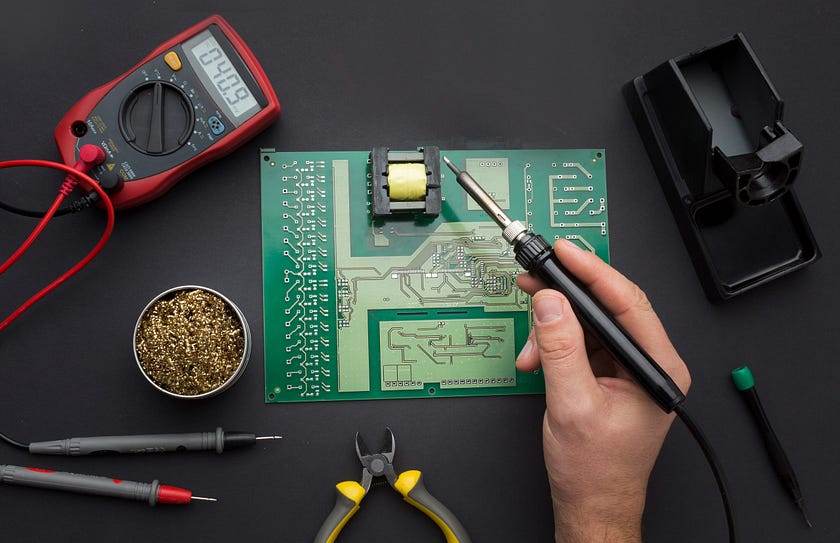PCB Design Best Practices: Applications and Latest Trends for 2023
Printed Circuit Boards (PCBs) are the foundation of modern electronic devices, enabling the interconnection of various components to create functional and reliable electronic systems. As technology advances, the complexity and performance demands of PCBs continue to rise, making it crucial to adhere to PCB design best practices. In this blog, we explore key best practices, applications, and the latest trends in PCB design for 2023.

Importance of PCB Design Best Practices
Adhering to best practices in PCB design ensures the creation of robust, efficient, and reliable boards. These practices help minimize errors, reduce production costs, and improve overall performance. Let’s delve into some essential PCB design best practices that every designer should follow.
Key PCB Design Best Practices
- Clear and Concise Documentation:
- Comprehensive and clear documentation is vital for effective communication between designers, manufacturers, and assembly teams. It includes detailed schematics, component placement, routing instructions, and assembly notes.
- Proper Component Placement:
- Component placement is critical for optimizing the performance and manufacturability of a PCB. Place components logically and systematically, grouping similar components together, and ensuring minimal signal path lengths.
- Efficient Routing:
- Effective routing reduces interference and signal loss. Utilize shorter, direct routing paths and avoid 90-degree angles in traces to minimize signal reflection. Maintain consistent trace widths and clearances to ensure reliability.
- Ground and Power Planes:
- Implementing solid ground and power planes reduces noise, improves signal integrity, and provides a low impedance return path for signals. This helps in achieving a stable and reliable PCB design.
- Signal Integrity:
- Maintain signal integrity by managing impedance, reducing crosstalk, and ensuring proper termination. Differential pairs should be routed together, and high-speed signals should be isolated from noise-sensitive analog signals.
- Thermal Management:
- Effective thermal management prevents overheating and ensures the longevity of components. Use thermal vias, heat sinks, and copper pours to dissipate heat away from critical components.
- Design for Manufacturability (DFM):
- Ensure that the PCB design is manufacturable by adhering to the capabilities and limitations of the manufacturing process. Consider factors like minimum trace width, spacing, hole sizes, and layer stack-up.
- EMI/EMC Considerations:
- Design PCBs to minimize electromagnetic interference (EMI) and ensure electromagnetic compatibility (EMC). Use proper grounding, shielding, and filtering techniques to mitigate EMI and achieve compliance with EMC standards.
Applications of PCB Design
PCBs are fundamental to numerous applications across various industries. Some notable applications include:
- Consumer Electronics: Smartphones, tablets, laptops, and wearables rely heavily on advanced PCB designs for compactness and functionality.
- Automotive: PCBs play a critical role in automotive electronics, including engine control units (ECUs), infotainment systems, and advanced driver-assistance systems (ADAS).
- Healthcare: Medical devices such as diagnostic equipment, patient monitors, and implantable devices require highly reliable and miniaturized PCBs.
- Industrial Automation: PCBs are integral to industrial control systems, robotics, and automation equipment, ensuring precise and reliable operation.
- Telecommunications: Networking equipment, base stations, and communication devices depend on high-speed and high-frequency PCBs for efficient data transmission.
Latest Trends in PCB Design for 2023
The PCB design landscape is continuously evolving, and staying updated with the latest trends is essential for designers. Here are some noteworthy trends for 2023:
- High-Density Interconnect (HDI) PCBs:
- HDI PCBs feature finer lines, spaces, and microvias, enabling higher component density and miniaturization of electronic devices.
- Flexible and Rigid-Flex PCBs:
- The demand for flexible and rigid-flex PCBs is growing, driven by the need for lightweight and compact designs in wearable and portable electronics.
- Embedded Components:
- Integrating passive and active components within the PCB substrate enhances performance, reduces size, and improves reliability.
- IoT Integration:
- With the proliferation of IoT devices, PCBs need to support wireless communication, low power consumption, and advanced sensor integration.
- Advanced Materials:
- Utilizing advanced materials such as high-speed laminates and low-loss dielectrics helps meet the demands of high-frequency and high-speed applications.
Conclusion
Adopting PCB design best practices is crucial for creating reliable, high-performance electronic systems. As technology advances, staying abreast of the latest trends and innovations in PCB design ensures that your designs remain competitive and future-proof.

Comments
Post a Comment